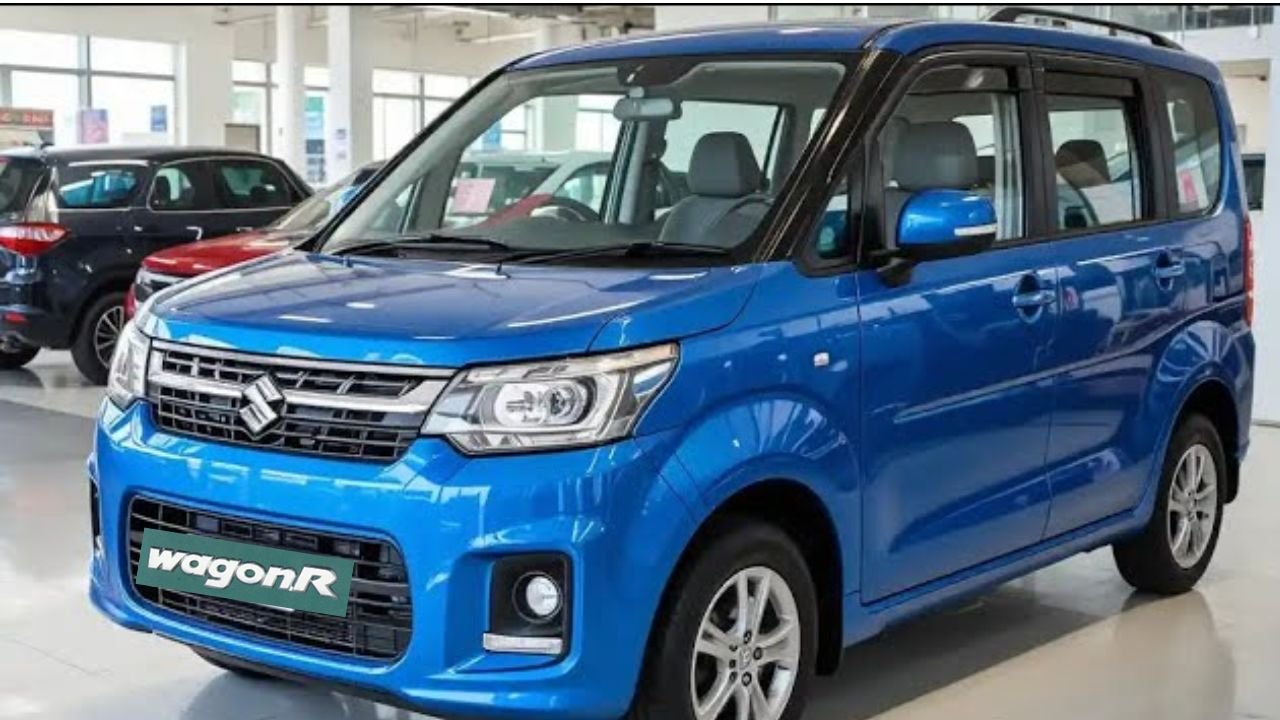Maruti Suzuki WagonR: A Tall-Boy That’s Still Standing Strong- Check Latest Price & Details!
Amid the ever-changing tide of compact SUVs and high-tech hatchbacks, there’s one car that’s quietly—but consistently—held its ground in Indian garages: the Maruti Suzuki WagonR. You’d be hard-pressed to find an Indian driver who hasn’t either owned one or knows someone who does. Introduced in the late ’90s and affectionately dubbed the “tall boy,” the WagonR has evolved—but never lost sight of what it was always meant to be: practical, affordable, and relentlessly dependable.
Let’s take a real-world look at what the latest iteration of this humble hero brings to the table—from its grown-up looks to the numbers it posts on a fuel meter.
Looks That Lean Practical (With Just a Hint of Swagger)
The WagonR has always been a bit of an oddball in terms of design—tall, boxy, and unapologetically upright. That shape, however, isn’t just a style quirk; it’s the reason it feels so roomy inside. The latest generation still keeps that silhouette but refines it into something far less utilitarian. Think less “budget van,” more “sensible city commuter with decent road manners.”
Maruti’s decision to build the current WagonR on the Heartect platform has paid off. It’s longer, wider, and feels better grounded than the older models. The front now has a sharper grille and big, expressive headlamps that soften its serious demeanor. There’s no wild experimentation here—just clean lines and proportions that make practical sense.
Step inside, and you’re greeted by a cabin that punches above its weight. The dual-tone theme adds a touch of elegance, and there’s a surprising amount of leg and headroom—especially in the rear. You won’t be stretching out like you’re in a luxury sedan, but you also won’t be banging your knees against the dashboard or wrestling for elbow space.
The infotainment system (available on higher trims) comes with smartphone connectivity, the seats are decently padded, and there are cubbies and cup holders exactly where you’d want them. It’s the kind of space that says: “Don’t worry, I’ve got this.”
Engine Choices That Get the Job Done—Quietly and Reliably
Under the hood, there’s no flashy turbo or hybrid wizardry. Instead, Maruti offers two tried-and-tested petrol engines: a modest 1.0-litre and a more robust 1.2-litre K-series engine. The 1.0 is perfectly sufficient for city crawls and office runs—it’s light on its feet and easy to zip around in traffic. But if you’re someone who likes a little extra push (or carries full loads regularly), the 1.2 is noticeably punchier.
Both engine options are available with either a manual gearbox or an AMT (automated manual transmission). The AMT might not win any drag races, but it’s smooth enough for daily drives and makes life a lot easier in bumper-to-bumper traffic. Shifts are mostly seamless, and for most users, it’s a set-it-and-forget-it affair.
There’s also the CNG variant, which leans heavily toward savings. It doesn’t have the liveliness of the petrol models, but when you’re clocking long distances or making frequent city runs, the cost benefit is hard to ignore.
Driving the WagonR isn’t exactly exciting—but it’s dependable. It feels planted at city speeds, takes bumps in stride, and maneuvers like a dream in narrow bylanes or tight parking spots. It’s built for the real world, not the racetrack—and that’s part of its charm.
Read: 2025 Hyundai Exter Becomes Bolder, Features-Rich with 1197 cc Engine, Check Price & Details
Fuel Economy That’ll Put a Smile on Your Wallet
Let’s talk numbers—the kind that really matter in the long run. Maruti has long been synonymous with fuel efficiency, and the WagonR continues that tradition proudly.
The 1.0-litre engine delivers around 24–25 km/l (depending on the transmission), while the 1.2-litre variant clocks about 23–24 km/l. Those are ARAI-certified figures, of course, but in real-world scenarios, most owners report numbers that come impressively close.
The real show-stealer is the CNG version, which boasts a mileage of about 34 km/kg. If you’re watching your monthly budget or doing regular intercity commutes, the savings add up—fast.
This kind of fuel efficiency makes the WagonR not just affordable to buy, but also a breeze to maintain. With fuel prices fluctuating more than monsoon forecasts, this alone is a reason why many families continue to trust the WagonR as their go-to workhorse.
Price That Doesn’t Make You Do Mental Gymnastics
Affordability is a big reason the WagonR has always been a best-seller, and thankfully, that hasn’t changed. The base variant starts at roughly ₹5.5 lakh (ex-showroom), and even the top-end trim with the 1.2-litre engine and AGS hovers around ₹7.4 lakh. That’s a pretty sweet spot, especially considering the rising costs of new cars in the post-COVID market.
What’s impressive is that even the mid-level trims come reasonably well-equipped—think dual airbags, rear parking sensors, power windows, and a touchscreen system with steering-mounted controls. And maintenance? It’s as low-stress as it gets. Maruti’s nationwide service network and affordable parts make this a car that doesn’t surprise you with hidden costs.
The CNG variants, priced around ₹6.5 to ₹6.9 lakh, are particularly tempting for high-mileage users. In fact, if you factor in long-term running costs, the WagonR CNG could end up being one of the most cost-effective cars in the country.
Wrapping It Up
The WagonR has never been about glitz or glamor. It doesn’t try to impress with gimmicks or pretend to be something it’s not. What it is, however, is a remarkably well-rounded car that gets the basics exactly right. Spacious enough for a small family, efficient enough to keep your budget happy, and priced so that you don’t need to overthink the purchase—it’s a recipe that still works.
Sure, if you’re chasing sporty styling or an all-digital dashboard, you might find the WagonR a bit old-school. But if you’re looking for a car that feels tailor-made for Indian roads, families, and fuel budgets, it’s hard to beat.
Over the years, many new players have entered the game, but the WagonR’s stayed relevant by sticking to what it knows best—function over flash. And maybe that’s the secret sauce. In a market of fleeting trends, the WagonR’s grounded reliability is what gives it staying power.
After all, sometimes the smartest choice isn’t the loudest one—it’s the one that simply shows up and gets the job done, day in and day out.
Also Read
- Royal Enfield Electric Bike Is Going to Launch with 259 km Range and Heavy Battery!
- R15 V5 Red Color Comes with Amazing Engine, Rider-Friendly Features! Only Rs 7000 EMI!
- Honda Beast Bike Launches with 998 CC Engine, 6-Speed Manual, Latest Tech and Features!
- Triumph New Bike Launched with 398CC Engine & Rider-Friendly Features!
- TVS Jupiter 125 – A Perfect Blend of Style with Eco Thrust Fuel Injection technology!

Shrishti is an experienced writer and editor with a strong focus on Government Schemes, News, Technology, and Automobiles. She brings clarity and depth to complex topics, making them accessible and engaging for a wide range of readers. With a keen editorial eye and a passion for accuracy, Shrishti ensures every piece she works on is well-researched and impactful. Her ability to adapt her writing style to suit different audiences makes her a valuable voice in digital and print media, keeping readers informed and up to date with the latest developments.






